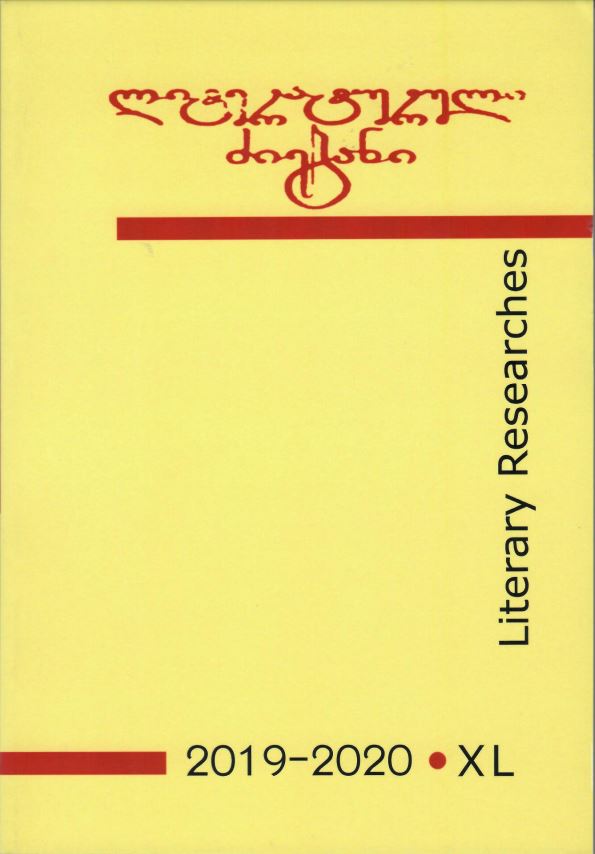Published 2020-10-20
Keywords
- Origin of Georgian Alphabet
How to Cite
Abstract
The paper deals with the issues relating to the chronology of Georgian Asomtavruli alphabet.
There exists character in Asomtavruli alphabet, its numeric meaning is 8, and phonetic – the vowel . This letter corresponds to (Ḥet) in the Phoenician and H (Eta) in Greek alphabet.
The phonetic meaning of the mentioned Phoenician and Greek letters was consonant h; Greek grapheme H changed phonetic meaning approximately in VII-VI centuries BC and became designator of a long sonant e (ɛː).
The research into the history of Asomtavruli alphabet evidences that numeric and phonetic meanings of its letters have been finally set up according to the Greek alphabet.
As it becomes clear from Georgian written sources that initially the Asomtavruli grapheme (ɛj) had phonetic meaning of a consonant h and not a vowel. Based on this fact, a supposition is expressed that the lower chronological boundary of the genesis of Asomtavruli could be around the 7 th - 6 th centuries BC. If this alphabet had been created later, the grapheme (ɛj) would have initially had the meaning of a vowel.
According to Leonti Mroveli’s The Life of Kings (X c.), Georgian script (“Mtsignobroba Kartuli”) was created by the first ruler of the Kingdom of Iberia who ruled circa 4 th -3 rd centuries BC. There is also another written source “Matiane Shemetsnebata” (this manuscript is lost and the data about it are preserved by a Georgian scholar Teimuraz Bagrationi (1782-1846) ) which states that the Asomtavruli alphabet was first used in the Georgian pagan temple. King Pharnavaz brought it out of the temple for public use. It is supposed that the reformation of the alphabet might have happened in the reign of King Pharnavaz which is evidenced from adding of those Georgian specific letters to it that are collected in the end of this alphabet.
It is suggested that in the Early Christian period the second alphabet reform was carried out and it was just at that time that the character (hoe; it is pronounced approximately as a long o; in our assumption the shape of Georgian Asomtavruli grapheme is a result of doubling of Greek Omicron) must have been added to the Georgian alphabet in the end. Long vowels are absent in Georgian language and from the phonetic viewpoint the introduction of the grapheme hoe was not necessary. In our opinion, this character was added in Georgian alphabet like in Greek to reflect symbolic name of Jesus Christ as the Alpha and Omega meaning “the First and the Last”.

